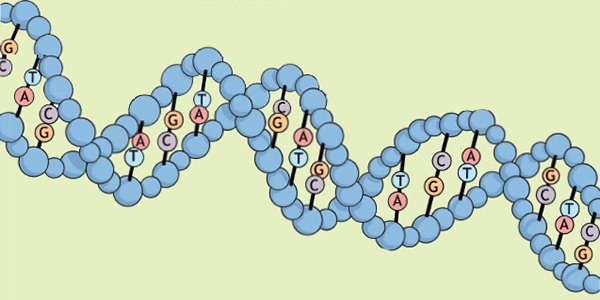Lesson 27: Why Do We Look Different? Part 1
by Stacia McKeever and Dan Lietha on May 30, 2016“Now the sons of Noah who went out of the ark were Shem, Ham, and Japheth . . . and from these the whole earth was populated” (Genesis 9:18–19).

Jesus loves the little children—all the children of the world. Red and yellow, black and white, they are precious in His sight . . .
We’ve probably all sung this song at one time or another. but is it really true? Are there really red, yellow, black, and white children? The answer, believe it or not, is, “Not really.”
Let’s Find Out Why
If you were to look through a microscope at a piece of your skin, you would find lots of interesting cells. Some help repair your skin when you cut it. Others help to continually make new skin to replace that which wears off at the surface. Still others (called “melanocytes”) make a pigment (called “melanin”) that helps to give your skin some color. The more melanin that these melanocytes produce, the darker the skin will be.
Scientists have found that we all have the same amount of melanocytes in our bodies.
Inside each melanocyte is a set of “instructions” (called DNA). The DNA tells the melanocyte how much melanin to produce, among other things. If the instructions in your body tell your melanocytes to make a lot of melanin, and your skin keeps a lot of the melanin that is made, then your skin will be very dark brown. If your instructions say “make a little melanin,” then your skin will be very light brown. And there are all combinations in between.

DNA—deoxyribonucleic acid.
This special molecule carries the information our bodies need to make us who we are. It tells our eyes to be blue or brown, our nose to be pointy or round, our hair to be curly and red, or straight and black, and so on. Our information comes from a combination of information from each of our parents, who inherited an information combination from their parents, who inherited information from their parents, and so on—all the way back to the first two people, Adam and Eve!
Melanin consists of two forms, normally produced together. One is dark brownish, the other reddish.
So, no one really has “red” or “yellow” or “black” skin. We all share the same brownish pigment; our bodies just have more or less of it!
The very same pigment, melanin, also determines the color of your eyes. If you have a lot of it in the iris of your eyes, they will be brown. If you have a little melanin, your eyes will be blue. Brown and black hair results from a lot of melanin in the hair shafts, blond hair from less melanin.
Want to learn more? Read the entire Answers for Kids Student Handout Set online!
 Download PDF
Download PDF
Answers for Kids Student Handout Set
These student handouts reinforce the lessons of the Answers for Kids Bible Curriculum while providing fun activities for children.
Browse Kids BookRecommended Resources
- © 2025 Answers in Genesis
- Privacy Policy
- Contact
- About



